Floral bud initiation and sexuality
Bakeapples are dioecious, meaning that individual plants are male or female. Flower development begins in late summer. As the fruits from the current year’s flowers are ripening up, next year’s flower buds are developing just below the surface. At this stage, all flowers have female organs (ovaries), but the male organs of female plants don’t initiate anthers. Later in the fall the ovaries of male plants will develop ovules. By spring the development of female organs is suppressed in male plants, and the flowers that emerge are clearly unisexual (Martinussen and Junttila, 2002). Hermaphrodite flowers are very rare, and are highly desireable for breeding programs.
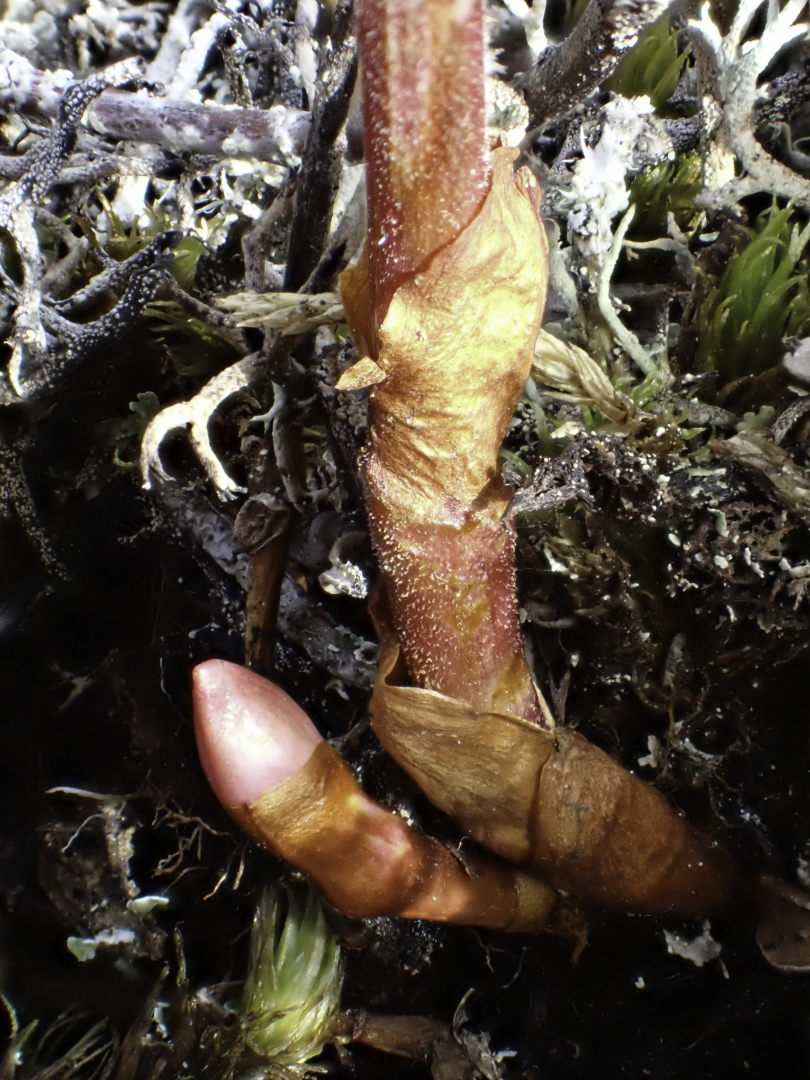
Bakeapple bud, August 10, ca. ten days after fruit ripened.
Flowering
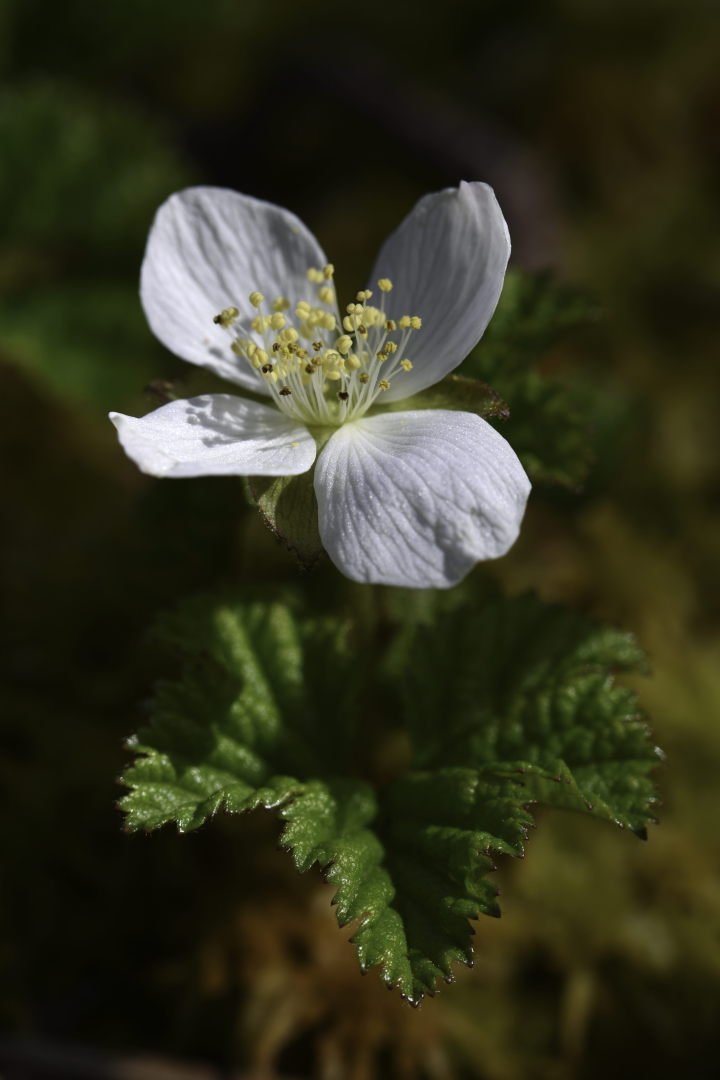
Male bakeapple flower
Flowering starts early in the spring, and the timing is highly variable (Brown and McNeil, 2009; Li et al., 2016). In Makkovik (55.1°N, 59.2°W) this can be from the first week of June until the first week of July, with mid-late June being usual (pers. obs). Male flowers often appear a few days earlier, and may be present longer into the summer than female flowers (Brown and McNeil, 2009). The peak bloom period is usually concentrated over a week at a location.
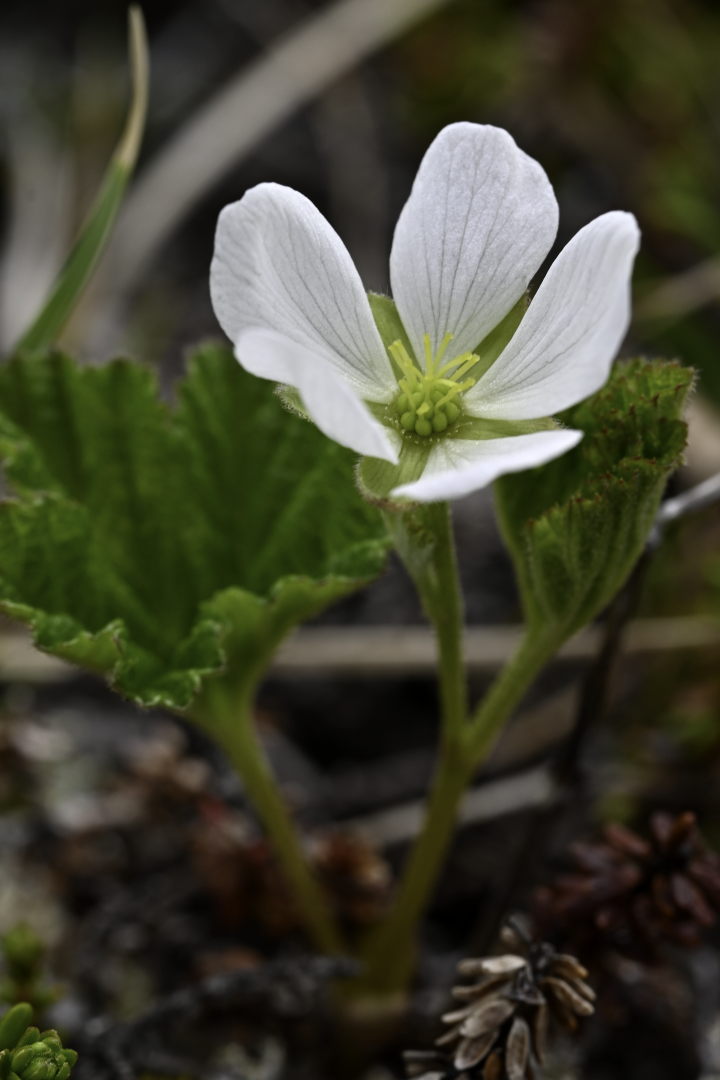
Female bakeapple flower
Individual female flowers usually open for only one or two days before their petals drop, and sepals close. This indicates successful pollination and the start of fruit development(Jean and Lapointe, 2001; Jones, 2010). There is limited evidence to suggest that female flowers are only fertile for 36 hours, after which their stigmas are no longer receptive (Kortesharju, 1993).
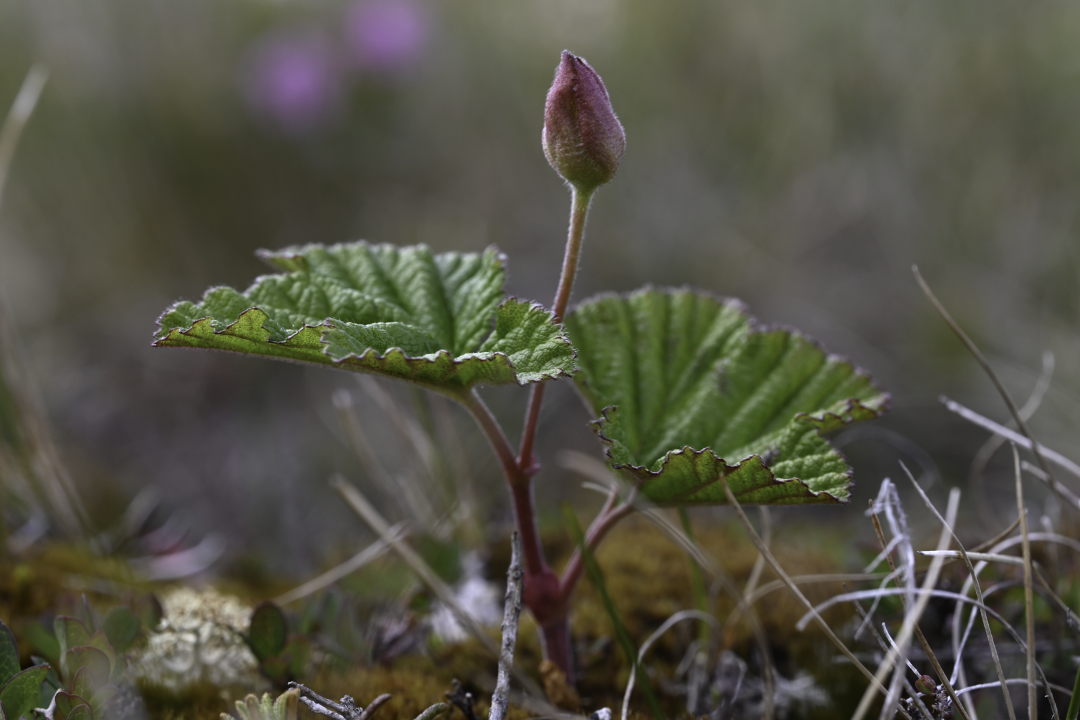
Female bakeapple flower, ca 1 week post pollination, sepals up covering developing fruit.
In cold (near freezing) temperatures, female flowers may stay open for a week or more (per. obs). However, their viability may suffer. Frost can cause visible injury to the flowers, most notably blackened ovaries. In addition, frost (or even near-freezing temperatures) may deprive flowers of their ability to set fruit without leaving any obvious damage (Kortesharju, 1995).
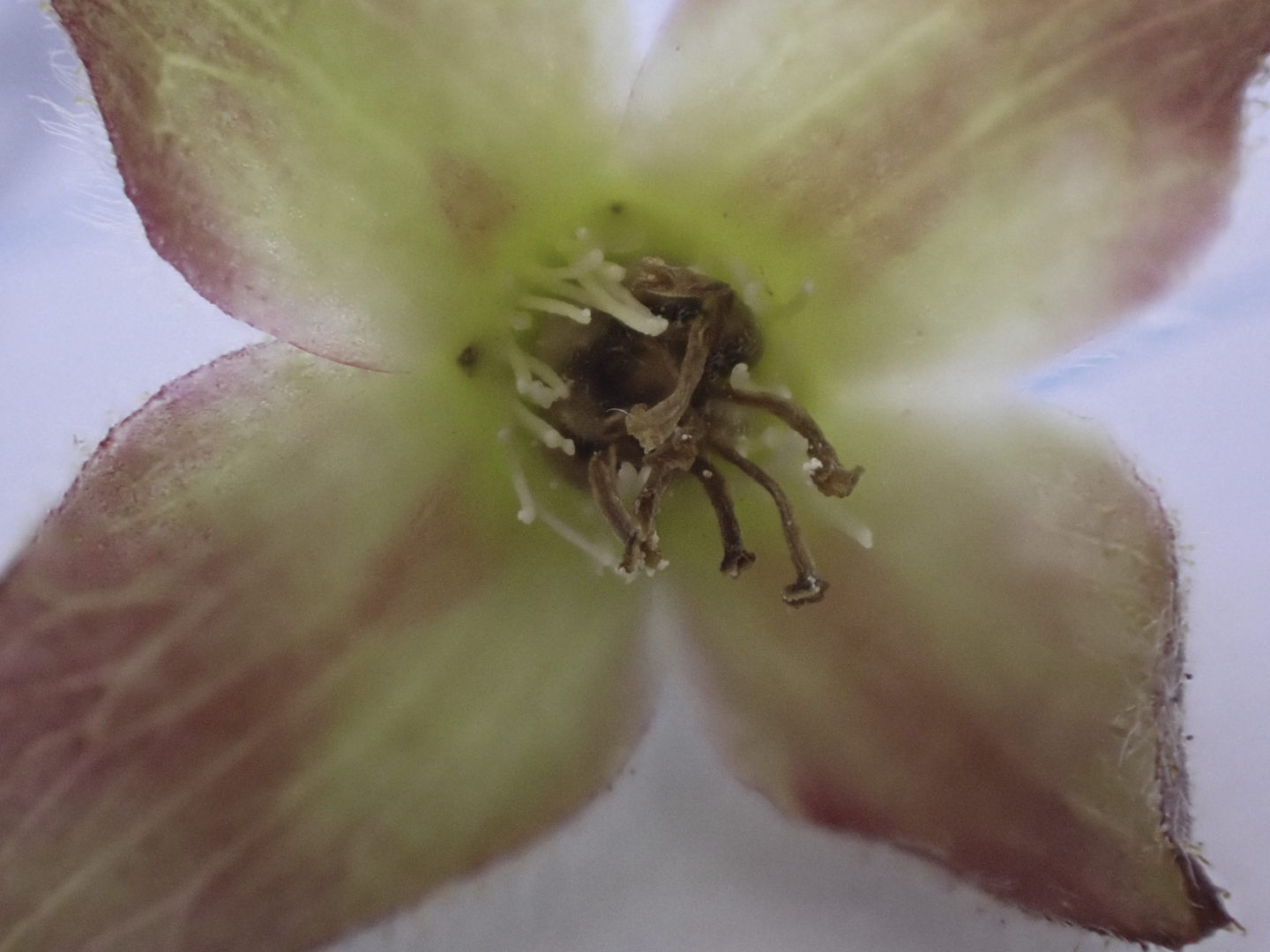
Frost-damaged female bakeapple flower: note the blackened pistils.
Male flowers don’t have clearly defined growth stages comparable to the females. They typically last a few days or more before their petals drop, and the anthers dehisce gradually, releasing pollen over several days (Brown and McNeil, 2009).
Pollinators
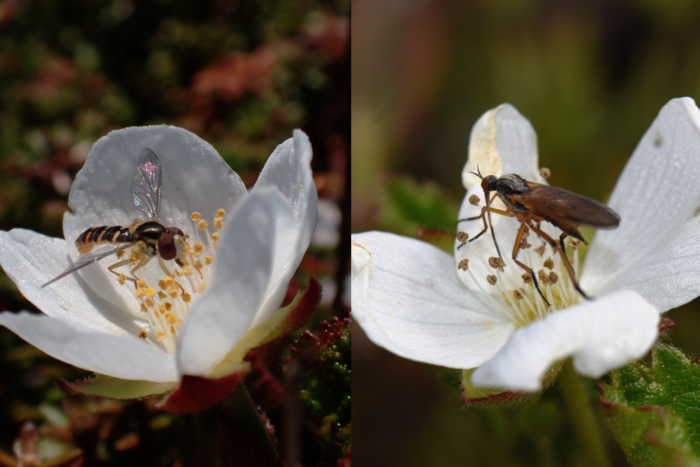
Pollinators on male bakeapple flowers. Left: A syrphid fly. Right: An Empidid fly
The most important pollinators are muscid and syrphid flies. Bumblebees and halictid bees are rarer pollinators, and less constant (i.e., visit a wider variety of species). However, the value of bees is increased by their capacity to remain active in colder conditions, and to travel further in their foraging (Brown and McNeil, 2009). It is widely reported that female bakeapple flowers do not produce nectar (e.g., Taylor, 1971, citing Jensen 1922); however, Brown and McNeil (2009) found that nectar production was variable among years, and in some cases females produce more than males. Male flowers did receive more visits from pollinators, possibly as a consequence of having larger petals (and they are more likely to have five petals, rather than four, than female flowers). They noted that a single visit from a muscid or syrphid resulted in fruit set in 76% and 92% of cases, respectively.
Fruit Development
Berry ripening takes 30-45 days, and is highly influenced by temperature (Kortesharju, 1993). The same study found local adaptation among populations for ripening time, with populations in northern/colder locations ripening faster than southern populations. Pollination rate also influences ripening speed. Flowers with fewer than 9 fertilized ovules ripened more slowly (up to five days longer), presumably as a consequence of reduced hormone levels in the aggregate fruit (Kortesharju, 1993).
Berries are also susceptible to frost damage (Kortesharju, 1995), although they become hardier as they mature.
Note that different researchers have used different indicators of the start and end of the ripening period: flowers open/petals off/sepals up, berries loose/sepals down. This could alter the measured duration by 2-4 days between studies.
The developing berries gradually push the closed sepals apart as they grow. When they are fully ripe the sepals reflex. This happens over the course of single day.
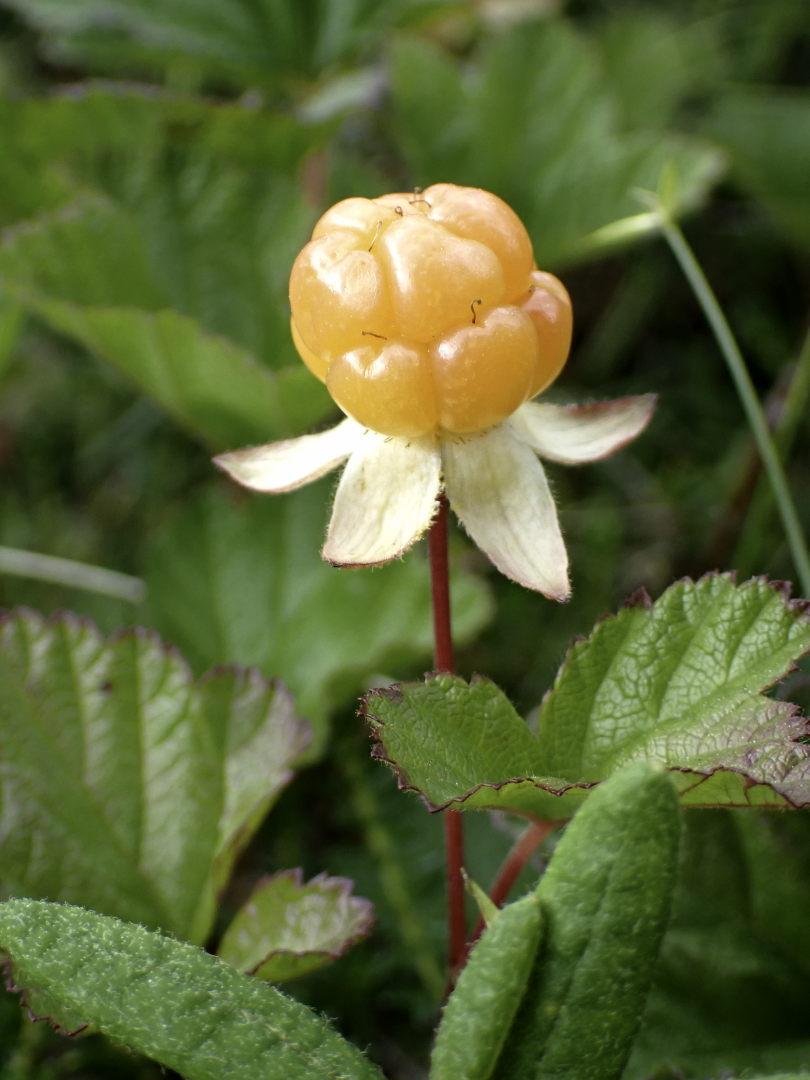
Ripe bakeapple flower with the sepals fully reflexed.
References
Brown, A. O., and J. N. McNeil. 2009. Pollination ecology of the high latitude, dioecious cloudberry (Rubus Chamaemorus; Rosaceae). American Journal of Botany 96: 1096–1107.
Jean, D., and L. Lapointe. 2001. Limited carbohydrate availability as a potential cause of fruit abortion in Rubus Chamaemorus. Physiologia Plantarum 112: 379–387.
Jones, A. 2010. Plants That We Eat: Nauriat Nigiñaqtaut - From the traditional wisdom of the Iñupiat Elders of Northwest Alaska. 2nd ed. University of Alaska Press, Fairbanks.
Kortesharju, J. 1993. Ecological factors affecting the ripening time of cloudberry (Rubus Chamaemorus) fruit under cultivation conditions. Annales Botanici Fennici 30: 263–274.
Kortesharju, J. 1995. Effects of frost on the female flowers, unripe fruits and vegetative growth of the cloudberry (Rubus Chamaemorus) in Finnish Lapland. Aquilo. Ser. Botanica 35: 31–38.
Li, J., D. Percival, J. Hoyle, J. White, K. Head, and K. Pruski. 2016. Phenology and yield of native fruits cloudberry/bakeapple (Rubus Chamaemorus L.) And lingonberry/partridgeberry (Vaccinium Vitis-Idaea L.) Grown in Southern Labrador, Canada M. T. Charles [ed.], Canadian Journal of Plant Science 96: 329–338.
Martinussen, and Junttila. 2002. Flower Development in Cloudberry (Rubus Chamaemorus L.). Acta Hort.
Taylor, K. 1971. Rubus Chamaemorus L. Journal of Ecology 59: 293–306.